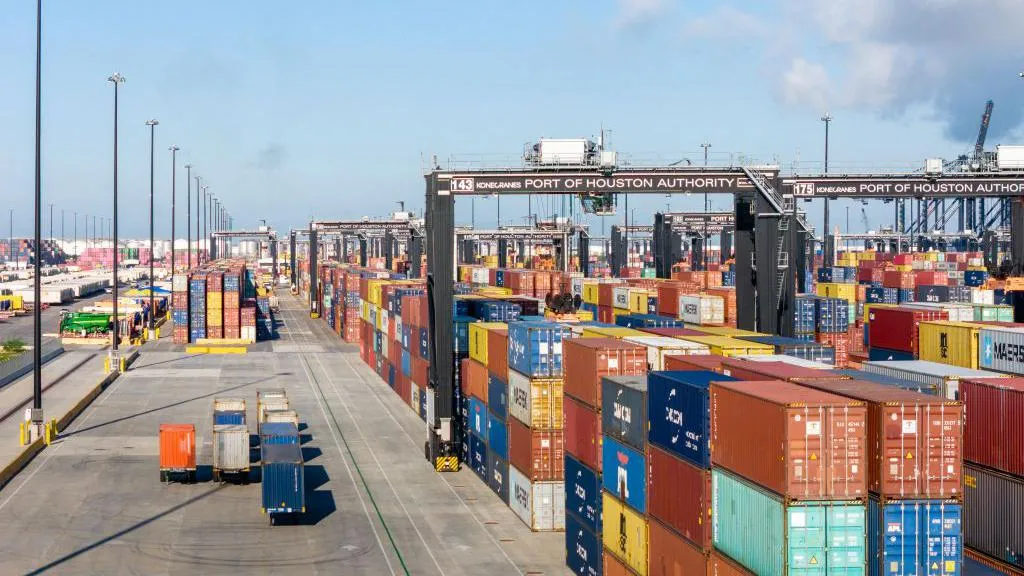
In a significant labor action, tens of thousands of dockworkers have initiated an indefinite strike across major U.S. ports, threatening to disrupt trade and economic stability as the presidential election approaches and the holiday shopping season begins. Members of the International Longshoremen’s Association (ILA) walked out on Tuesday at 14 key ports along the East and Gulf Coasts, effectively halting container traffic from Maine to Texas. This marks the first strike of its kind in nearly 50 years.
Background of the Strike
The strike comes after months of stalled negotiations, with the current contract between the ILA and the U.S. Maritime Alliance (USMX) expiring on Monday. While President Joe Biden has the authority to impose an 80-day cooling-off period to allow for further negotiations, the White House has indicated that no immediate action is planned. Biden and Vice President Kamala Harris are closely monitoring the situation and have urged both parties to engage in good-faith negotiations.
The labor dispute centers around a six-year master contract that impacts approximately 25,000 port workers involved in container and roll-on/roll-off operations. According to USMX, a recent proposal was made to increase wages by nearly 50%, enhance pension contributions, and improve healthcare options. However, ILA President Harold Daggett has demanded significant pay increases and raised concerns about potential job losses due to automation.
Economic Impact
As the strike continues, it threatens to affect a wide range of goods and services. Time-sensitive imports, such as food, are likely to be the first casualties. The involved ports handle about 14% of U.S. agricultural exports and over half of imports, including critical supplies like bananas and chocolate. Disruptions may also impact industries like textiles and automotive manufacturing, particularly for European carmakers that rely on the Port of Baltimore.
Economists warn that the strike could have severe economic repercussions. Seth Harris, a labor expert and former White House adviser, indicated that while immediate impacts might be minimal, prolonged disruptions could lead to rising prices and shortages over time. Grace Zemmer, an associate economist at Oxford Economics, estimates that the economic toll could reach $4.5 billion per week if the strike persists, potentially leaving over 100,000 workers temporarily unemployed.
The Political Landscape
This strike occurs at a sensitive time for the U.S. economy, with rising unemployment and sluggish growth just weeks before the upcoming election. The situation poses a political challenge for President Biden, who may face criticism regardless of how he chooses to respond. Historical precedents show that U.S. presidents can intervene in labor disputes that threaten national security. For instance, in 2002, President George W. Bush intervened after a prolonged strike by dockworkers on the West Coast.
The U.S. Chamber of Commerce has called on Biden to take decisive action, warning against the economic fallout that could arise from allowing the labor dispute to fester. The organization’s president, Suzanne P. Clark, noted that past experiences of supply chain disruptions during the pandemic highlight the risks of inaction.
Union Dynamics and Public Perception
The ILA has historically been a key supporter of Democratic candidates, having endorsed Biden in 2020. However, Daggett has recently expressed frustration with the administration, particularly regarding pressures on West Coast dockworkers. This could complicate Biden’s relationship with labor unions at a time when maintaining support from these groups is crucial.
Public sentiment surrounding strikes can be volatile. While Daggett’s leadership has faced scrutiny due to past controversies, including a 2004 acquittal related to organized crime, many workers still relate to the issues of rising living costs and automation fears. Professor William Brucher of Rutgers University suggests that while public opinion may shift against the ILA, the union’s decision to strike reflects their priorities and concerns.
As the strike unfolds, it is likely that mounting pressure will push employers back to the negotiating table with more substantial offers. This situation exemplifies the ongoing struggle between labor and management in a rapidly changing economic landscape, raising questions about the future of work, fair wages, and the impact of technology on jobs. The outcome of this strike could have lasting implications not only for dockworkers but for the broader U.S. economy.








